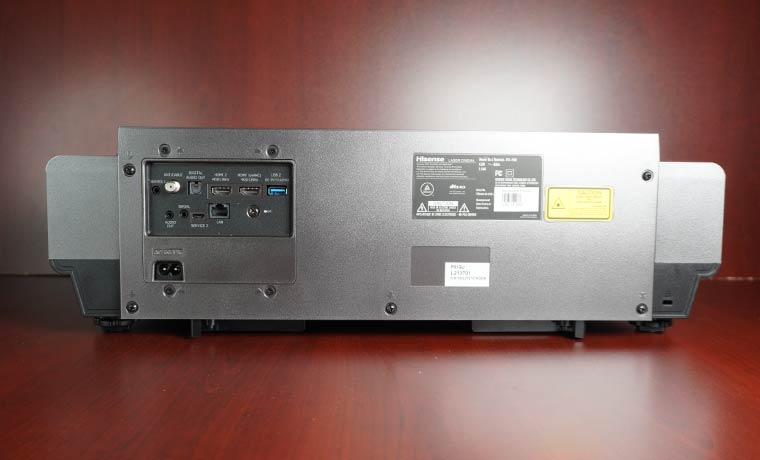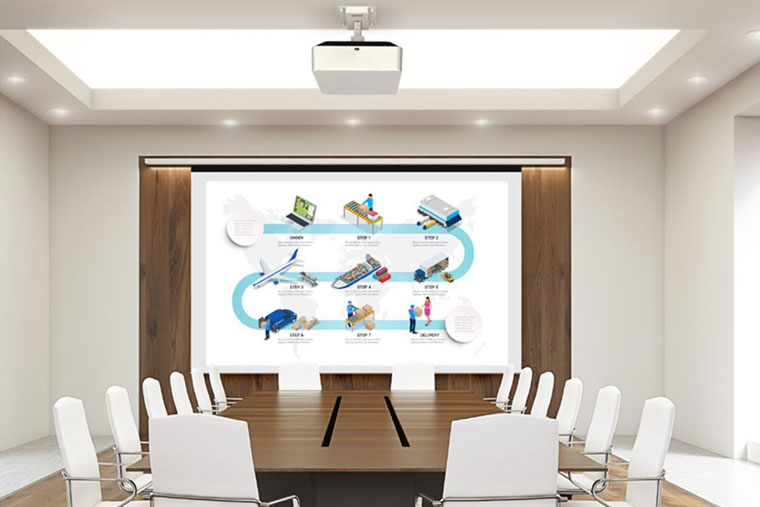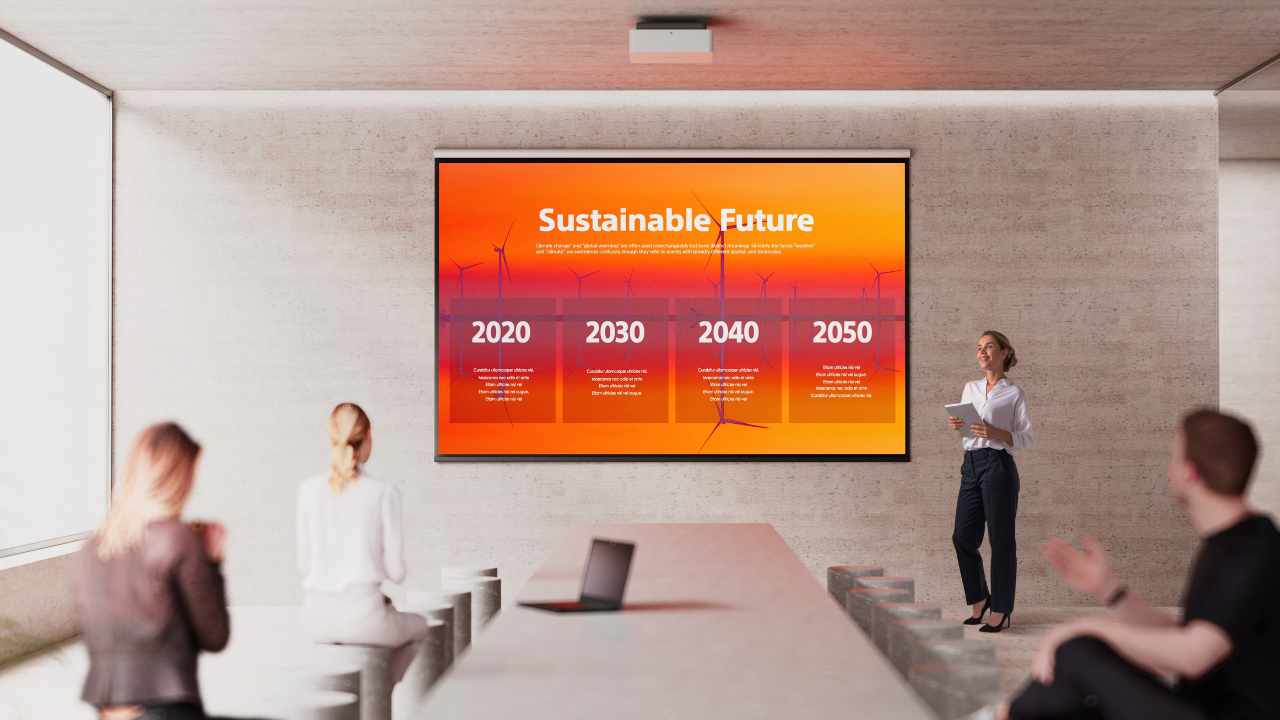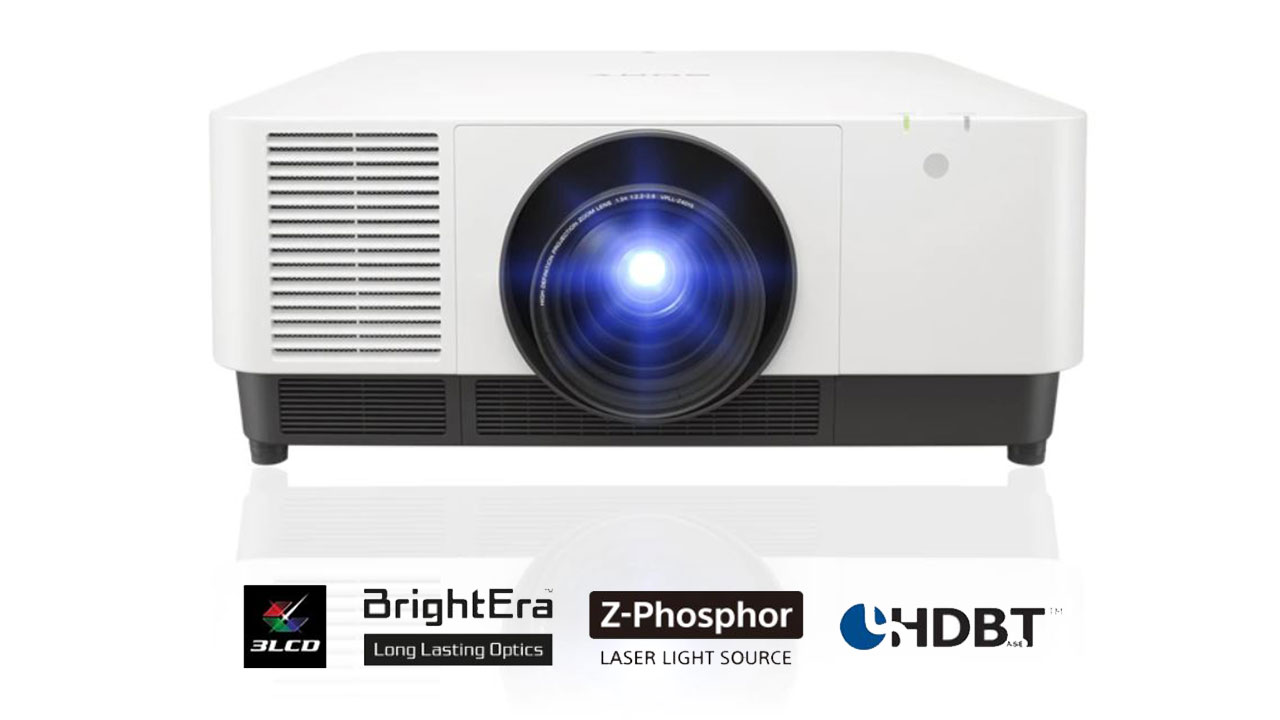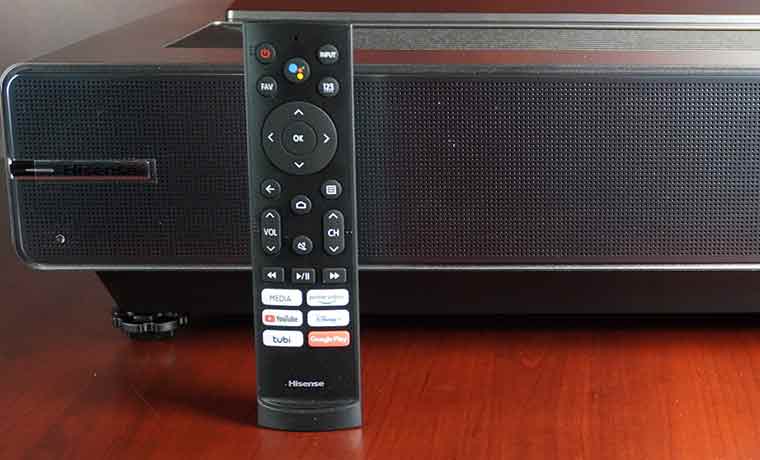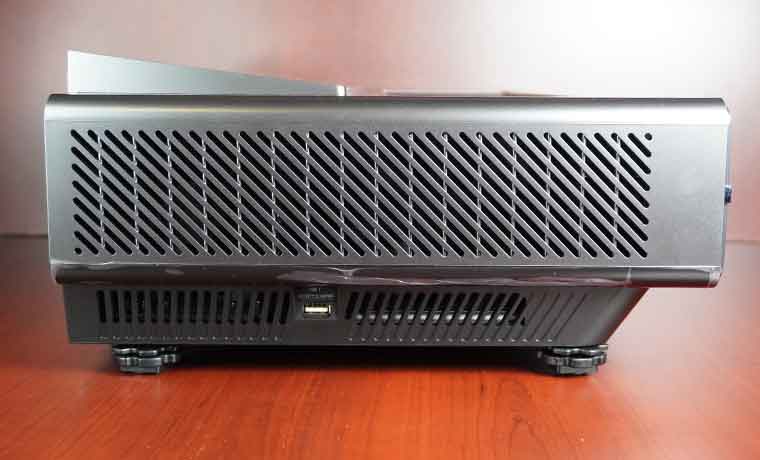On top of the projector, right in the middle of the projector, is a control panel with the most of the important controls. There are buttons for Power, Source Search, Menu, Navigation, Escape, and Enter. The menu navigation buttons double as adjustment buttons for vertical and horizontal keystone adjustment. Following those are buttons for adjusting the volume of the built-in speaker. Lastly, there is a Help button (also on the remote) which Epson has offered on previous models as way to solve simple problems that may occur in use, without having to stop and consult the manual. Pushing this button brings up some questions designed to narrow down the problem. The Help function then takes you directly to the appropriate section of the menu to address that problem.
Indicators for Power, lamp status and temperature (if overheating) are along the left (facing the front) top edge of the projector. In the rear left corner, behind the control panel, is the cover for access to the lamp. Having the cover on top of the 96W allows for easy access even if the projector is ceiling mounted. The screw to release the cover is on the left side of the projector. Moving to the right (again facing the front) side of the projector, there is an intake vent and air filter near the front. Like the lamp compartment, the air filter can be easily accessed even if the projector is ceiling mounted. The door to access the air filter also covers the slot for the optional wireless LAN module.
Moving to the rear panel, there are a plethora of connections for video and audio. Starting with the power cord connector on the bottom, moving from left to right, there is an HDMI input, followed by an S-video and a composite video input, with stereo audio inputs. Next are two standard VGA computer inputs with accompanying audio inputs. These are followed by two USB connectors, a standard Type A for a USB thumb drive and a Type B that is used for connection to a computer to output video over USB to the 96W. Following those is a wired LAN jack, a second IR receiving eye, a Kensington lock port and the built-in speaker. Along the bottom of the rear panel are computer monitor and audio outputs, a microphone jack and an RS-232 control port.
Menus
As we noted with the recently reviewed 1775W, Epson has kept its menu system pretty much the same over the years, with the only differences relating to the feature set of the particular projector. Menus are well organized, and easy to navigate. Once set up and connected to an image source, you simply bring up the menu; select the Image menu and the Color Mode (Dynamic, Presentation, Photo etc.) that’s appropriate for your presentation. From there you can also make the usual adjustments for Contrast, Brightness, Color Saturation, Tint and Sharpness. Additional adjustments can also be made to Red, Breen and Blue intensity, as well as selecting other color temperatures and turning the auto iris (for increased contrast in darker scenes) on or off.
As evidenced by its built-in 16-watt speaker, the Epson 96W’s is specifically designed for presentations with sound. As such it has multiple audio inputs, including one for a microphone. In the unlikely event that you would need an external audio system, there is an audio output jack whose level can be controlled by the remote.
Menus Slideshow

